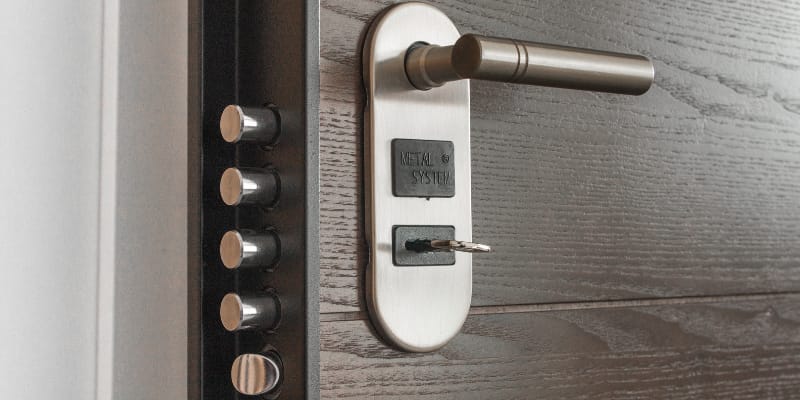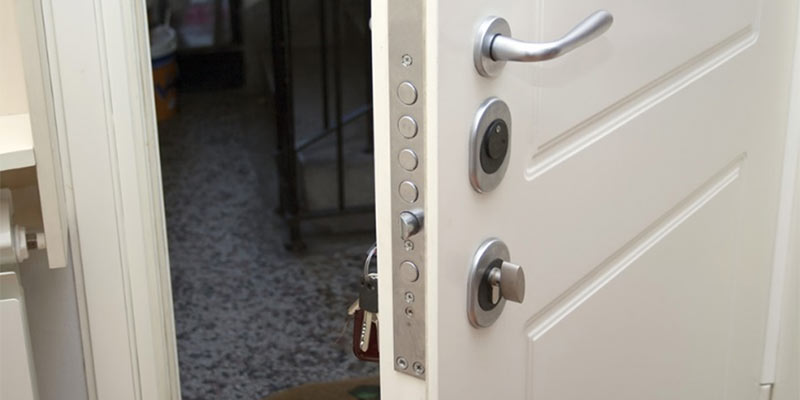Categorized under a certain resistance classification, the main task of anti-theft doors is to provide sufficient protection and security for people inside the room against various external threats.
One of the most threatening factors anti-theft security doors have to protect their owners against, are burglars; dangerous criminals who seek a decent opportunity to penetrate into your property and steal your assets.
Earlier, they could do so easily; they just had to wait for you to leave your property for a long period of time; then they had enough time whether to pick your lock, or to crush the door, using a variety of equipment and tools from pliers and screw drivers and wrenches and saws and hammers and axes, to electric jigsaws and even angel grinders.
Though, it was the robbed ones, researchers and manufacturers’ turn to do something about the same matter and find a remedy.
They had to provide their houses and companies with higher levels of protection.
Soon, a European standard was established under which manufacturers had to produce new ‘anti-theft’ security doors.
European Standard EN 1627:2011 provided a frame in which anti-theft doors became well-enhanced to resist against burglars.
EN 1627 requires the manufacturers to use specified hardware and tests them in three stages, including:
- EN 1628: The static load test during which they put a stagnant weight on the door to test its mechanical strength.
- EN 1628: The dynamic load test during which they impose dynamic pressure like kicking the door and hitting it with shoulder.
- EN 1629: The manual testing during which they test the chronological resistance of anti-theft doors using different tools a burglar may utilize to fight his way in.
Different classes of protection these doors provide include: RC1, RC2, RC3, RC4, RC5, RC6

What is RC2 Security Rating
RC1 and RC2 are the first two levels of security provided by anti-theft manufacturers according to European rating.
But what is RC2? These classifications represent first and second levels of threats against a property protected by the door, the period of time it has resisted the tests, the period of time it can resist getting breached through and the lockpicking and door-crushing tools it can resist.
An anti-theft security door enjoying RC1 which is the lightest and weakest level of protection, can resist burglars using tools like pliers, spoons and screwdrivers to breach through.
Note that the door is not supposed to stay unharmed after the burglar is done with it; but the structure and the equipment mounted on it are to be sacrificed for sake of protecting the property and assets over the door.
All the RC1 protected anti-theft security door has to do is to resist the burglar(s) using pliers, screwdrivers or spoons within the certain given time and till the moment whether the property owner or the police are inbound.
This level does not necessitate manual test.
The next level of protection defined for anti-theft security doors is RC2 which requires the door to resist different wrenches and saws such as compass saw, jigsaw and hacksaw _that are useful for putting holes in a door_ in addition to the tools that doors meeting RC1 can resist.
The officially designated period of time these doors have resisted during tests is 15 minutes, but practically, a door meeting RC2 can resist a burglar’s attack for 3 minutes.
RC3 Burglar Resistance
RC3 and RC4 are next levels of resistance against burglars’ attacks and attempts in order to invade your property.
It is accepted worldwide that the more security technology advances, the more professional criminals become, and vice versa.
So, we have to get ourselves and our properties prepared to face well-equipped burglars who are seriously intending to steal your stuff.
These burglars who are not afraid of the consequences of the noise they would make, may bring even tougher equipment like locksmith hammer, crowbar or hand drill.
Logically, the door must be physically stronger to bear the shocks from a hammer or a crowbar.
Moreover, different layers of steel sheet, wood, composite or HDF can be useful to make a burglar who intends to make a hole in an anti-theft security door disappointed.
Now let’s take you to a higher stage of threat and security with RC4 standard.
Imagine you have an experienced burglar to defeat.
The thief has electricity power available and can use electric drilling machine.
So, in addition to a solid and firm type of wood or composite or HDF, the thickness of the steel sheet within your wood finish anti-theft security door has to be at least 1 millimeter to sustain heavy shocks from burglars who use bigger hammers, axes, chisels and wedges.
RC3 level doors have resisted against burglars for 20 minutes and the same ratio for RC4 doors is 30 minutes, but practically, a costumer can except RC3 and RC4 doors to resist shocks for 5 and 10 minutes consecutively.

EN 1627-1630
European official name which represents RC5 and RC6 is EN 1627-1630.
Finally, the highest level of protection and security is provided for those who expect the most dangerous and the noisiest door-crushing machines and equipment, as well as the toughest burglars around their neighborhood, where they live and where they work.
However, these extremely resistant doors are mostly used for political, military, business and commercial buildings in which the most precious stuff, documents or VIP are kept.
RC5 represents the penultimate level of security for anti-theft doors which the owners expect to be threatened by electric jigsaws and saw blades.
These doors have proven to resist under shocks and burglar attacks with the mentioned machines maximumly for 40 minutes but the practical resistance time is 15 minutes.
The last and highest level is called RC6 which embraces all the tools and machines mentioned above plus the roughest and toughest possible enemy a door can have: angel grinder.
This heavy, noisy and strong machine that you have met in many heist movies, can cut ordinary doors’ hinges and other extra security features in less than a minute, but the RC6 anti-theft security door we are discussing has proven to sustain all types of pressure for maximumly 50 minutes during tests, while the practical time it is expected to resist pressure is 20 minutes.
Our complex has established close relation with great and credible suppliers of all kinds of anti-theft security doors under each level of security the client desires.


0
0